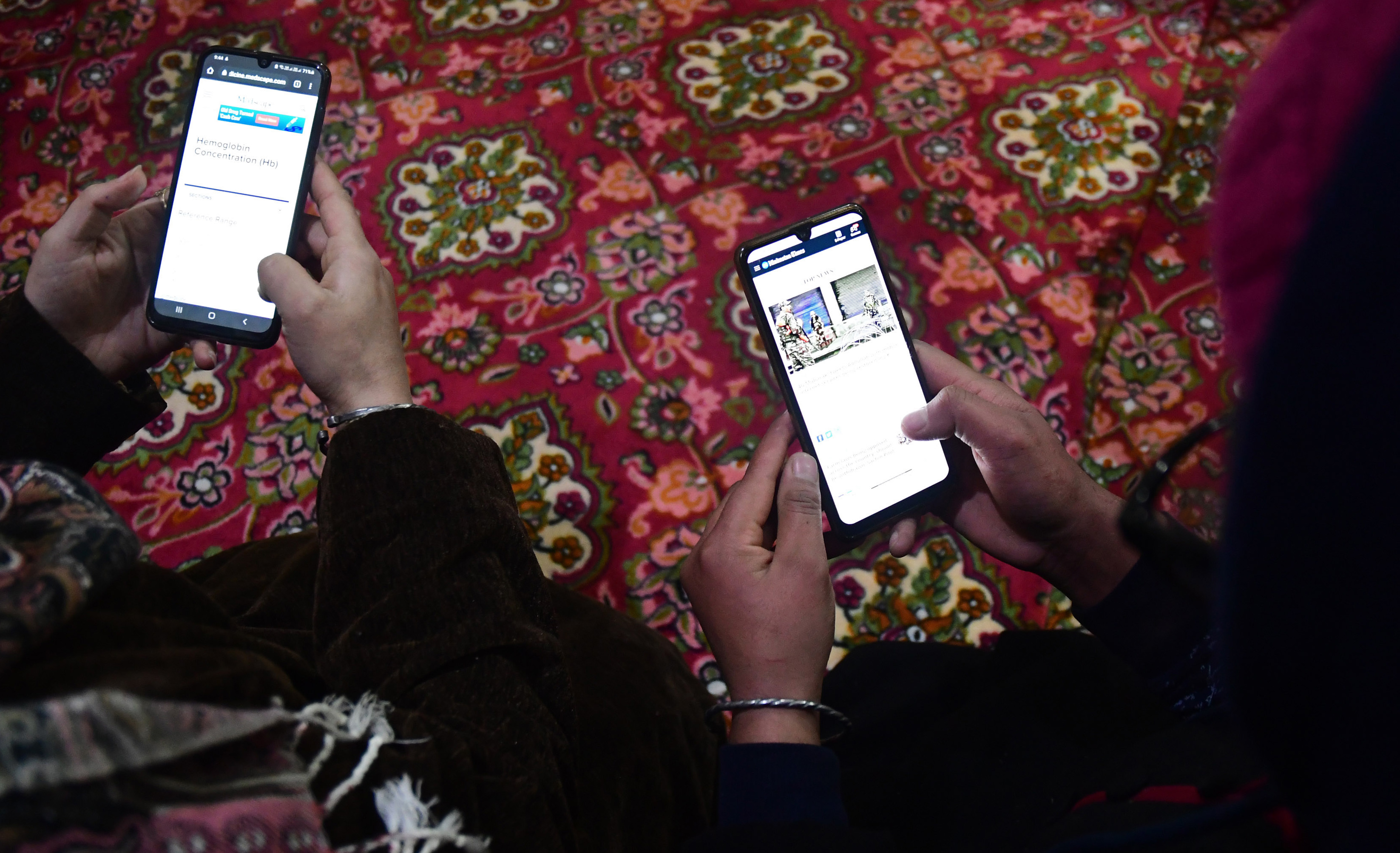V spends 2-3 hours on the mobile. His YouTube go-to is for facts and games or school questions He also likes understanding the Comprehensive Test Ban Treaty because he is fascinated with the subject.
A recent study shows that as of December 2021, India had 646 million users aged 2 years and above. Rural India has 20% more internet users than urban India. Since 2019, rural users have grown 45%, while urban, 28%. The latter can of course be put down to reaching saturation levels earlier.
In this context, two sides of a coin. Students of Class X of a local government school underwent a basic training in media and information literacy.
Day 2 reveals that no student had heard the name of one of Bollywood’s famous singers, Mukesh. This vacuum of legendary “knowledge” is in sharp contrast to everything else
Three out of 16 children had no access to mobile phone use. One had limited access for a few minutes to play games. One of them was allowed fully monitored access to internet on a computer for one hour for study-related work or “gaining some knowledge”. The remaining students used mobile phones for internet access for anything from 1 to 3 hours. The range of reasons of use are similar to some extent and quite dissimilar otherwise.
D uses the mobile for 1-2 hours every day for science study and WhatsApp “status”. Meaning, to see what others have posted. In most cases, she said, “mazaa nahin aataa”. Meaning, she finds most of it meaningless.
B uses the mobile for about 1-1½ hours. She is inclined for reading up mostly about spiritual matters or “motivational” videos. Otherwise, to keep up-to-date with issues of the day like corona or the Ukraine war.
G uses the mobile daily for 2-3 hours. He gets onto YouTube for his science subjects. Then for some “general knowledge” like numbers that are given to fruits or reading up about the richest man in Asia. For the remaining time, he chats with friends.
H is on the mobile for 1-2 hours every day. His main interest is getting to YouTube for cricket, to understand the nuances of bowling and batting techniques. In absolute contrast, he additionally regularly listens to the rendition of the “Sundarkand” part of the Ramayana epic by his favourite singer. He says he finds it very soothing and comforting.
(This is how the curious matter of singer Mukesh came up because he had recorded one of the earliest and popular full renditions of the Ramayana.)
K uses the mobile for 1-2 hours. He likes to be on YouTube for secrets like the snake, which is seen every six months and visible only to “some”. He also enjoys viewing mobikes and biking videos.
K2 is on the internet for about 1 hour. He uses the time on YouTube for learning rules of different games.
D2 uses the mobile for about 1-1½ hours. He gets onto YouTube “to check out doubts” related to subject chapters at school. He is also very interested in stories related to Extinction and Creation.
H uses his 2-3 hours on YouTube to follow his favourite YouTubers and stories about things like the mythological demon king Ravana in Sri Lanka or play games like Free Fire.
V spends 2-3 hours on the mobile. His YouTube go-to is for facts and games or school questions He also likes understanding the Comprehensive Test Ban Treaty because he is fascinated with the subject.
P uses his 1 hour for games and cartoons on YouTube. He enjoys cartoons like “Motu-Patlu” and “Shiva” because of the characters.
J gets the mobile for half an hour on request and uses it only for school work.
G spends whatever time he gets to learn about amazing facts.
These students were given a brief journalistic lesson in the 5Ws and 1H (what, where, when, why, who and how), 6 “ka” in Hindi, which they grasped very quickly. A 15-minute assignment followed. They had to work in two groups and write out “a story” related to their immediate environment, in which they answer all six elements.
The results were revealing, to say the least. One group talked about the possibility of a campaign to address bad tourism practices by visiting tourists to their “beautiful, idyllic” surroundings. The other group worked around the issue of rampant alcoholism and how and why it needed to be addressed. Both groups answered all elements.
As if this was not enough, later discussions threw up more revelations.
One student spoke very firmly about censorship of viral videos. According to him, WhatsApp or the CEO of WhatsApp should not be hauled up or asked to modify their systems towards control. He felt that technology was advanced enough for authorities to track the original source or sources of such videos. They are the ones who should be caught and punished. Without saying it in so many words, the concept of Freedom of Expression seems deeply rooted in this child, about 15-16 years of age with a semi-rural background.
The students were guided to alternate search engines for more diversity of search results. They had two issues to investigate for the next day. As a result, discussions around Elon Musk vs Twitter and the role of Russia in the Ukraine war threw up interesting facts. Including biolabs.
Information access, use and spread in rural India may need to be taken very seriously.
Neelima Mathur is an India-based Executive Producer, Researcher, Writer, Mentor and Trainer for documentary and NGO films. She is also Festival Director of the Lakeside Doc Festival.

